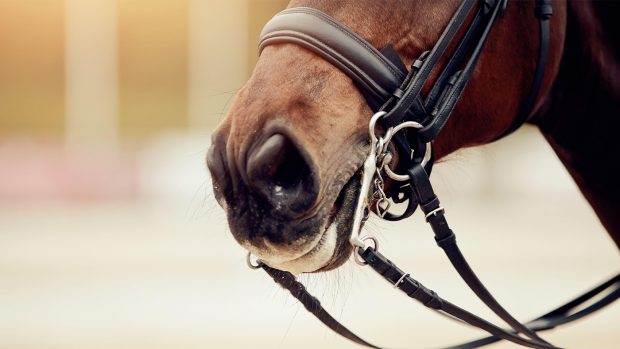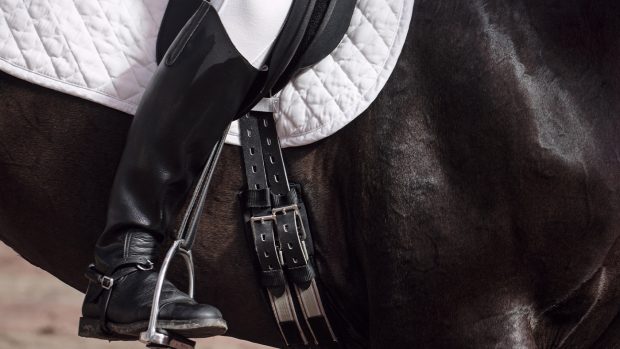CONFUSION has arisen about the FEI’s tack approval processes, as the organisation states there is “no certification system” in place – but that new items can be submitted via an app for “review” by an expert equipment group.
Ongoing discussions have been taking place around tack approval after it was announced that the Quantum cavesson bridle, now known as the welfare bridle, is no longer permitted in dressage under FEI rules from this year (news, 5 January).
Quantum co-founder Gill Batt told H&H that when the bridle was launched in November 2018, the company approached the FEI for approval and submitted an FEI dressage equipment form. In response, they were told by the FEI that the bridle was “very similar to a bridle that has already been approved and so you do not need to submit an application, it would already be allowed for use in FEI dressage competitions”.
Ms Batt said in November 2022 that when they found out the bridle would be banned, they spoke to the FEI and were asked to have the bridle pressure-tested – but were not given any protocols on how this should be conducted. Quantum had the bridle independently tested by the University of Copenhagen, during which it was compared against four FEI-approved bridles, and the results concluded the welfare bridle “exerts significantly less pressure on the nose” than the other bridles, under different pressure-testing measures.
“We were thrilled with the results, the bridle was what we said it was. But when we submitted the results to the FEI, we immediately got the rebuff, saying they were not interested,” she said.
Ms Batt said despite more communication, the FEI will not permit the bridle.
“Absolutely you should be challenged about your product, you should have to put your money where your mouth is – which we have done. But they are still blocking it and we don’t understand why,” she said.
Last month, when H&H approached the FEI for comment, at first a spokesman said the organisation “can only repeat their statement” given to H&H in January about concerns over the bridle’s noseband pressure – and reiterated that horse welfare is “paramount” and that the FEI “continuously reviews new tack and equipment to ensure the healthy and safety of equine athletes”.
The spokesman added that the FEI “does not have certification processes for individual pieces of tack and equipment”.
“In other words, there is no mechanism where the manufacturer or other parties are able to submit a piece of tack and/or equipment for review by a panel, and get a ‘stamp of approval’ by the FEI,” he said. “Therefore, the officials are expected to apply the rules as written.”
Since this statement, the FEI announced the launch of a new tack and equipment app at the FEI Sports Forum (news, 4 May). The app provides riders and officials clarity on what is and is not permitted in each discipline, with updates planned including a function to allow FEI officials to submit photos and videos of new equipment to be reviewed by the FEI equipment expert group.
Following this announcement, H&H approached the FEI again to clarify the organisation’s position around tack approval and the spokesman told H&H that Quantum submitted a picture of the bridle to the FEI dressage department in 2018 – and at the time, the bridle was “approved”.
“At the time, the dressage department had an informal approval process in place for equipment, whereby manufacturers were advised if their equipment was compatible with the rules or not,” he said.
“According to the picture sent by the company, the bridle appeared to have a standard cavesson noseband and was therefore approved. However, it was later discovered that the cheekpiece passed through the noseband, altering its function and rendering it non-compliant with FEI rules.”
The spokesman added that in 2019, the expert equipment group was formed by the FEI board to devise a “scientific-based and unified approach” to tack and equipment across all disciplines where possible, while “taking into account their uniqueness”. He said this group consists of people with sport, vet and legal backgrounds and the group works closely with external experts and equine researchers including Hilary Clayton and Rachel Murray.
“The expert group has been mandated to review the existing rules and processes, to propose amended rules in the future with the aim of achieving consistency of on-site decisions, at FEI Events, across all disciplines.”
The spokesman then reiterated that “there is currently no tack and equipment certification system in place where manufacturers, riders or other parties can submit a piece of tack for a stamp of approval”.
“However, due to the ever-evolving market of tack and equipment and with the high number of new products being launched every day, there will be instances where the applicable sport and/or veterinary rules will not provide a definite answer on the compliance of individual tack and/or equipment,” he said.
“In such cases, and in particular where there are potential horse welfare concerns, the group will make a decision whether the relevant tack or equipment is permitted to be used at FEI events in order to provide clarity to stakeholders.”
Another manufacturer, Salute Equestrian, has raised concerns about FEI tack approval processes after 16-year-old Lucy Standish was asked by a steward to remove her Salute Click & Connect neck strap before entering the cross-country start box in the CCI2*-S at Thoresby Park last month. The neck strap was designed with three connection options – to the saddle, girth or breastplate.
Lucy, who had the neck strap connected to her girth, said: “The cross-country steward said I wasn’t allowed to use my neck strap as it didn’t connect to the saddle.
Salute Equestrian founder Anna Bruce told H&H that after investigation, it was understood that the stewards received an email from the FEI last autumn stating, “This particular neck strap has been reviewed by the eventing committee and their feedback is that it is not allowed for eventing.” Under FEI rules, if neck straps are used for cross-country, they must be attached either to the breastplate or to the saddle.
“I believed, when connected to the girth, it met the rules – after all, it’s approved when connected to a breastplate that in turn is connected to the girth,” said Ms Bruce.
She added that she “hoped for a discussion” with the FEI to enable the rules to allow for neck straps to be attached to the girth, or for the neck strap to be “considered a hybrid breastplate in this format”. But she said the FEI told her there was no mechanism where the manufacturer or other parties are able to submit a piece of tack for review
“While we can work with the ruling as it stands [because the Click & Connect neck strap can also connect to the breastplate or saddle], I’m hoping the FEI or stewards will ask to view the neck strap in practice and not just from a photograph, and give it a fair assessment in this format for the benefit of horses, riders and the perception of our sport,” she said.
An FEI spokesman told H&H the decision at Thoresby Park was a “field of play decision and appeared to have been taken correctly by the relevant official”.
You might also be interested in:

Bafflement as bridle designed for horses’ comfort is banned in competition

Thoroughbreds to be recognised at Olympics, but still can’t contest World Breeding Championships

Subscribe to Horse & Hound magazine today – and enjoy unlimited website access all year round
Horse & Hound magazine, out every Thursday, is packed with all the latest news and reports, as well as interviews, specials, nostalgia, vet and training advice. Find how you can enjoy the magazine delivered to your door every week, plus options to upgrade your subscription to access our online service that brings you breaking news and reports as well as other benefits.




